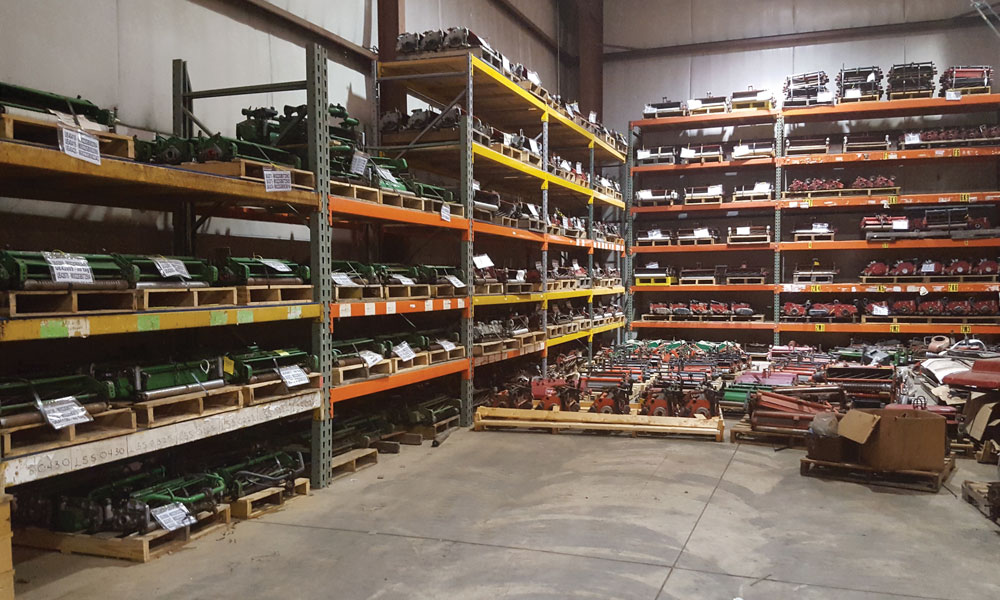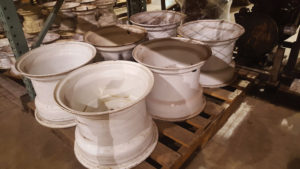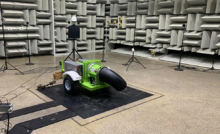Falling Leaves and Budgets!


In the world of golf, fall is always a great time of year as we say goodbye to summer heat and the stress of the season. The leaves are falling and the nights are getting cooler with the smell of the first frost in the air. Most of the maintenance crew is gone for the year. I appreciate that a smaller crew always translates into fewer breakdowns of the equipment. In the world of golf, fall is always a great time of year as we say goodbye to summer heat and the stress of the season. The leaves are falling and the nights are getting cooler with the smell of the first frost in the air. Most of the maintenance crew is gone for the year. I appreciate that a smaller crew always translates into fewer breakdowns of the equipment.


My introductory column in September provided a little background about my career on the mechanical side of golf course equipment maintenance and repair, with a major part of it, working in the position of Equipment Manager. One of my many responsibilities as an Equipment Manager was to purchase repair and service parts for the equipment and shop, plus prepare yearly budgets for these expenses.
Fall is the time of year to think about drafting a budget for the next year. The average equipment repair and service parts budget is approximately $40,000 or five percent of the total budget for the golf course maintenance. Budgets are divided up into preset dollar amounts for each month of the coming year, with the anticipation of making those funds last through an entire year. How the money is spent does not always go a planned. An unexpected failure such as the turbocharged diesel engine in the rough mower can easily exceed $5,000 or more for a new replacement. One or two expenses like this will consume a large piece of the budget pie.
I hear almost daily about how bad it has been financially for the golf industry the past few years. When the finances are tight so goes the squeeze on the budget. As a Superintendent or Equipment Manager, how can we ease the pain of tightening budget strings? There is the option of shopping around for deals on new original equipment parts or aftermarket parts. Also, the buying power of bulk purchases In general these purchases are new consumable maintenance parts. Consumables as air and oil filters, bed knives, lubricants, and tires. Consumables are used up and will be replaced at regular intervals throughout the year.
I remember as a young car owner, my repair budget translated into no money, no budget. My option was to schedule a Saturday morning trip to the local junkyard and purchase used parts to fix the car at a fraction of the cost of new. The good used parts were original equipment parts with plenty of usable life left. Of course, times have changed, now those junkyards are now called auto recyclers.
This same concept of saving money applies to golf course equipment. You ask, “But where do I find these used golf course equipment parts?” Sure, there is not a used golf course equipment parts supplier in every town. But a quick search of publications like The Golf Course Trades Magazine, you use will easily find vendors like Cutter Parts Online and more. Money saved will generally be half the cost of new. The savings are even greater on big-ticket items like an engine or major hydraulic component.
We have all been there have or experienced the weekend morning rush to finish mowing greens when the operator clips a post and breaks off a reel motor again. This gets quite expensive at $250 dollars and up. In this case spend $139 for used and get the same original equipment manufactured quality. How about this one, a greens mower rolls over an embankment and damages the hydraulic tank, fuel tank and steering. These components do not need to be replaced by new parts. Used will work as good as new and again at a fraction of the cost. Older equipment that has gone out of production, can remain in service with obsolete parts found in salvage equipment. There is room every budget large or small for good used parts.
One final note, while drafting your budget, take a good look at including a sound preventative maintenance program. Our time and energy are always more efficiently used when performing scheduled maintenance versus the constant chasing down of unexpected repairs. The results of this improved efficiency will be seen in the condition of the golf course.
Remember at the end of the day we are just mowing grass….
Photos Courtesy of Cutter Parts Online.
Brian Duffy’s career spans thirty-five plus years in the golf industry. With a diverse background of working on golf courses and turning wrenches on all types of equipment. Plus teaching Golf Course Equipment Mechanics and progressing into turf equipment sales and service. For any questions, comment or ideas contact me at mxk92@yahoo.com
Recent Posts
Q&A with a Multi-talented Golf Course Architect – Part 2: Making the Rounds – Installment 39
This column features recollections of the author’s 37 years as a golf writer. These installments…
One of the Biggest Jobs in Golf
When Rory McIlroy finally slipped into the Green Jacket on Sunday, April 13, 2025, after…
Audubon International Marks Earth Day In Growth Mode
As the world celebrates Earth Day on April 22, Audubon International – the environmentally focused non-profit…
Help keep golf sustainable by bidding in GCSAA’s Rounds 4 Research online auction
In celebration of Earth Day, you can help fund the research that advances golf’s environmental…
Five Cabot Golf Courses Place in Golfweek’s Prestigious 2025 Top 100 International Courses List
Cabot, a developer and operator of luxury resort and residential golf destinations, is proud to…
Champion Hills Rebuilds with Heart: A Story of Resilience and Restoration
When Hurricane Helene swept through in late September 2024, Champion Hills Golf Club faced a…


